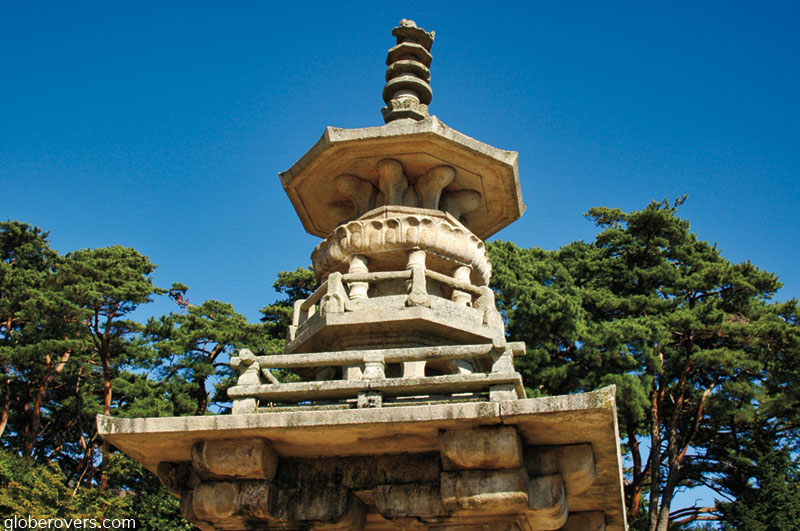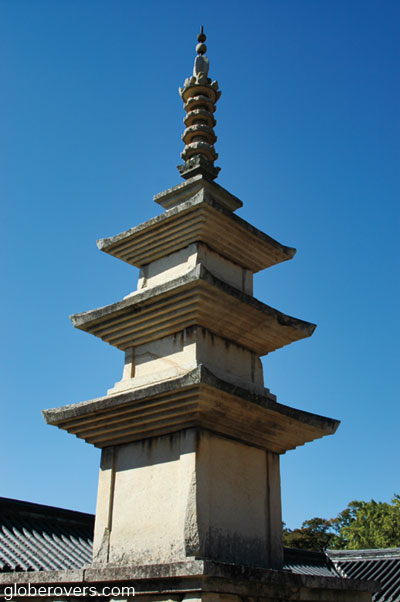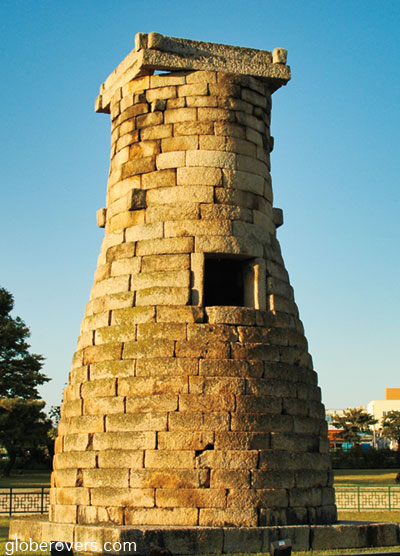
Words by Steve Kennedy, Kent, United Kingdom. Steve is a PR professional and founder of the World Complete travel blog that documents his attempts to visit every corner of the globe… eventually. Through his accounts he hopes to pass on a few helpful hints and tips for other travellers along the way. Part-time scuba diver, full-time travel enthusiast, Steve currently has 42 countries under his belt and is always looking for his next new place to tick off.
Photos by Peter Steyn, GlobeRovers.
Located in the south-east of South Korea, the ancient city of Gyeongju remains somewhat off the average visitors’ itinerary.
Yet, while this intriguing city does not have the size – or indeed the pulling power – of the nation’s capital, Seoul, there are a growing number of tourists dropping it into their plans for a nationwide sweep of the southern part of Korea.
A key reason for this, it can be deduced, is that the city holds more temples, pagodas, tombs, palaces, gardens and Buddhist statuaries than any other place within the country.
Situated in the province after Andong, Gyeongju is home to almost 275,000 people as well as an impressive three UNESCO World Cultural Heritage sites: Yangdong Village, Bulguksa Temple and the Gyeongju Historic Areas.
The first of those sites is Yangdong Village. Founded by Son So, in the 1400s, it is the birthplace of the lineage that produced one of the eighteen sages of Korea; Yi Unjeok.

Today the village still stands and has over 160 tile or thatch roofed homes built throughout the dense forest. Impressively, 54 homes that are over 200 years old have also been preserved allowing future generations to marvel at this site of historic value.
Moving just outside the city – on the slopes of Mount Toham – sits the second UNESCO site and one of the head temples of the Jogye Order of Korean Buddhism; Bulguksa Temple.


Bulguksa was built in 528 AD, when Buddhism was officially accepted in the region and now houses no fewer than seven national treasures of South Korea including the Dabotap and Seokgatap stone pagodas and the Cheongungyo (Blue Cloud Bridge) and Baegungyo (White Cloud Bridge).
Suffering damage and destruction numerous times over the centuries, Bulguksa remains – for many South Koreans – a vital relic of Buddhist culture. Since its first incarnation it promotes the wish of peace and prosperity for all and is also considered to be a masterpiece of Buddhist art from the Kingdom of Silla.

Silla itself is a vital part of Korean history as it formed one of the Three Kingdoms of Korea alongside those of Baekje and Goguryeo. Combined, The Three Kingdoms covered the land that now makes up what we know today as North and South Korea.
Lasting almost a thousand years (57 BC – 935 AD) Silla played an important role shaping the Korean Peninsula and its people’s heritage before eventually falling to the Goryeo rule which, briefly, unified the whole of Korea.
While unification spelled the end of the Silla rule, the change in administration didn’t cause the end of the fallen kingdom’s history.
Indeed, remnants of this once mighty kingdom can still be seen all around the region – including central Gyeongju – and perhaps none is more apparent that of the famous Daereungwon Tomb Complex (the Royal Burial Grounds) in the heart of the new city.

These burial grounds also form a significant part of the third, and final, UNESCO World Heritage Site in Gyeongju in the aptly named Gyeongju Historic Areas.
Gyeongju was seen as the capital of the ancient kingdom of Silla and it became a site of great importance for the kingdom’s many rulers.
When death came, these kings and queens wanted to be remembered appropriately. The desire to be immortalised heralded the creation of what is now known as the Daereungwon Tomb Complex; part of the modern-day, Tumuli Park Belt.

The Tumuli Park Belt consists of three groups of royal tombs, known as the Daereungwon Area in Korean. The name “Daereungwon” came from a history book, History of Three Kingdoms, which states: “King Michu was buried in Daereung.”
The belt is the final resting place of numerous high-ranking figures including kings, queens and aristocrats. By section, the clusters of tombs are separately called Hwangnamri, Nodongri and Noseori.
The belt is easily identifiable. From the outside these large grassy mounds that look like small hillocks, encompass a tombs – or tumuli. Under the earth, these graves are surrounded by small stone chambers – where the coffin would be placed alongside artifacts from the deceased’s life – before being covered to signify their position.

Over the years, the valuable relics placed inside the tumuli have been excavated from the tombs. These finds included golden crowns, glass cups, various types of earthenware and the Cheonmado painting (Painting of a Heavenly Horse).
The latter of these finds was discovered in Cheonmachong Tomb which visitors can enter and see. Excavated in 1973, Cheonmachong Tomb consists of a wooden coffin placed inside an underground chamber mounded with boulders and earth.
At a height of 12.7m and a diameter of 50m, the mound consists of a layer of rocks collected from streams. Below the rock layer is a wooden chamber that measures 6.5m long and 2.1m wide, reaching 2.1 m in height which is where the painting was created.

Since its discovery, a total of 11,526 artefacts were discovered within this tomb alone, including the Cheonmado painting; an artwork considered highly valuable as it is Korea’s first artwork to be excavated from an ancient tomb.
It is, of course, just one example of such a tomb in the Belt. There are hundreds, and visitors get the chance to walk freely around what has been described as ‘the world’s largest museum without walls’, once they’ve paid for a ticket at the entranceway.
One final, noticeable, landmark in the area is the Cheomseongdae; a small stone tower that looks similar to a British bottle-kiln. This tower, however, was not for pottery, but instead for astronomy (Cheomseongdae translates as “star gazing tower” from Korean). It remains significant because it is the oldest surviving astronomical observatory in Asia, and possibly even the world, having been constructed in the 7th Century.

Gyeongju feels like a trip to living history. With so many artefacts spanning centuries, the city is a melting pot of intrigue. Antiquity and modern culture meld together seamlessly, so much so, that it’s hard to see where the past ends and the modern day begins.
As a cultural hub for those venturing to South Korea, the city of Gyeongju – and the surrounding region – could end up being the most interesting place to visit that most people have probably never heard of.

☛ Read more: Posts of South Korea


